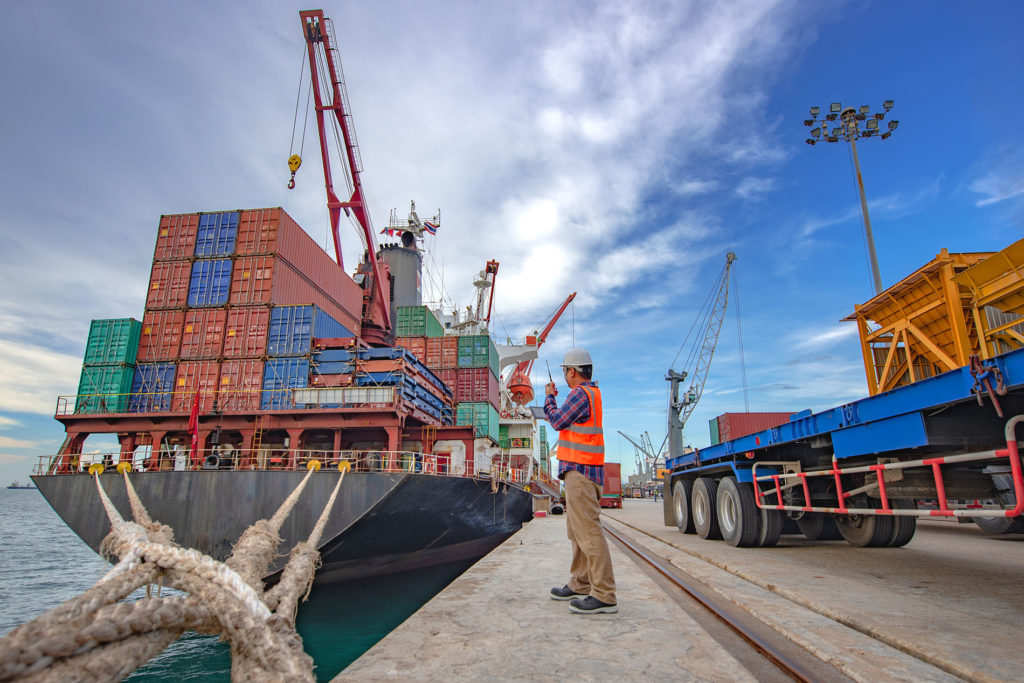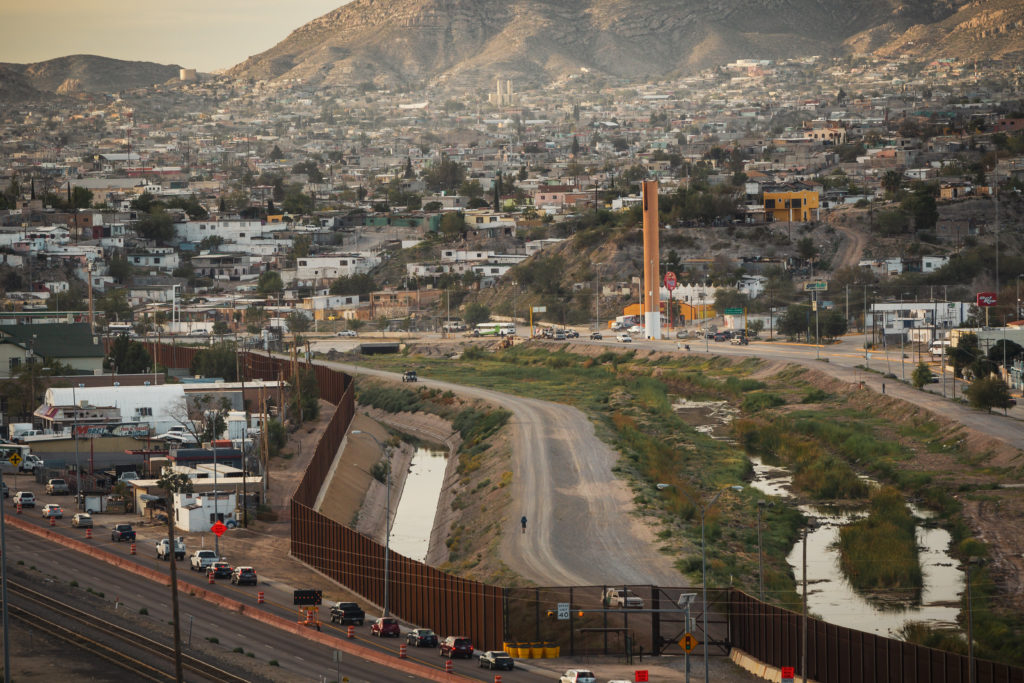- La Feria Community Holds Succesful Business Mixer Event
- Little Nashville to Take Place in Downtown Mercedes
- Lions Basketball Captures District Gold
- La Feria ISD Students Compete in Regional Chess Tournament
- Lions End First Half of 32-4A on a High Note
- La Feria ISD Held Another Successful Parent Conference
- Strong Appearance for Lions at Hidalgo Power Meet
- LFECHS Students Get to Meet Local Actress
- Students Participate in Marine Biology Camp
- Two LFECHS Students Qualify for All-State Band
Texas A&M Center Assessing Security Risks From Pandemic
- Updated: April 22, 2022
Research, programs address global supply chain, disinformation, biological threats, more

Written by Paul Schattenberg
Since the pandemic, the general public has had a growing awareness of the supply chain and how interruptions can affect their goods and services. One Texas A&M University agency is tasked with assessing security risks to the global supply chain and helping protect the country’s health and economic security.
The ability to prevent, prepare for, detect, respond to and recover from an incident affecting human, animal or plant health without disrupting the supply chain is the focus of the Cross-Border Threat Screening and Supply Chain Defense, CBTS, Center of Excellence at Texas A&M University
The center was formed by the Texas A&M University System in partnership with the U.S. Department of Homeland Security, DHS, Science and Technology Directorate Office of University Programs.
“We were established to serve as a conduit for research and to examine potential capabilities to secure the U.S. against threats and hazards without compromising the pace and operational structures of commercial enterprises,” said center director Greg Pompelli, Ph.D., Bryan-College Station.
“We support the DHS mission, which includes the detection, assessment and response to known and unknown biological threats and other hazards that could adversely affect the country’s people, agriculture and economy.”
Texas A&M leads the consortium of U.S. academic institutions and other partners to assist DHS planning and operations in protecting the global supply chain and reducing the risk of exposing people and infrastructures to new and evolving biological threats.
“We were chosen as a Center of Excellence due to our willingness to commit professional and academic resources and build partnerships as well as for our university-wide expertise in science-based research and technology development,” Pompelli said.
He said after the center identifies a challenge, the team develops initial research questions using government, industry and academic insights.
“Understanding how projects and project outputs could be combined to form new capabilities is critical,” he said. “This requires that we build teams with the skill sets necessary to advance projects through their entire life cycle.”
What does the CBTS do?
Pompelli said the CBTS assists the DHS by helping solve critical problems related to detecting and addressing biological threats, advancing novel analytics for timely decision-making, and developing new operational methods to assess national supply chain networks.
“We also strive to apply academic advances, industry partnerships and enhanced workforce development programs to educate and train current and future personnel throughout the homeland security enterprise,” he said. “And we provide unique capabilities and capacities to support time-critical response for the DHS through the implementation of next-generation approaches for threat identification.”
Heather Manley Lillibridge, Ph.D., executive director for the CBTS, said critical research and workforce development activities provided by the center are needed to assist the DHS in lowering the risks associated with trade as a potential source of threat introduction.
“We maintain a variety of agile research, development, test, evaluation and transition programs consisting of biological threat screening, detection and characterization to improve the resiliency of supply chains and homeland security in general,” Manley Lillibridge said. “We are also focused on enhancing the short- and long-term economic vitality that comes from having safe borders that are open to commerce.”
Projects related to COVID-19
“The disruptions caused by the COVID-19 pandemic and the actions taken to mitigate their impact presented serious challenges to food and agricultural sectors,” Pompelli said. “They also demonstrated how such events could affect the nation’s security.”
To address these challenges, the CBTS employed a mix of approaches to fully capture the impacts on the food and agricultural sectors, with each project providing insights to expand understanding of the risks faced beyond the pandemic. These include:
— Contracting with researchers at Victoria University through the Center for Accelerating Operational Efficiency at Arizona State University to use modeling to examine the direct and indirect impacts of COVID-19 on major U.S. agricultural sectors and reduced economic activity.
Using an expanded agricultural sector model, researchers assessed the impacts of labor and transportation constraints in the sectors. This modeling effort helped serve as the basis for examining how post-COVID-19 markets might recover across major U.S. agricultural commodity markets, producers, consumers and federal policy expenditures in the short and long term.
“Market outcomes in 2020 were driven by factors other than the pandemic, such as a surge in crop exports and weather disruptions,” said Matt Cochran, DVM, center research director. “Certain impacts of the pandemic were partly due to policy responses, including sector-specific actions targeting agriculture, fiscal policy, monetary policy and lockdowns. But three of the largest direct impacts of COVID-19 were on fuel markets, meat supply chains and consumer demand patterns.”

Cochran said the combined analysis of these factors provided the center with some of the earliest estimates of the aggregate economic impacts of the pandemic on the U.S. economy and its major food and agricultural sectors.
— Initiating a study with the Anneal Initiative, Inc. to assess other global supply chain threats and risk analysis capabilities, particularly for inputs related to pre-harvest livestock and crop production. The project developed needs assessments that could be used to better understand supply chain risk.
“This included the development of Analytical Requirements and Threat Identification Reports that looked at how U.S. adversaries could potentially manipulate scientific publication processes to negatively impact the U.S. COVID-19 response,” Cochran said. “It also addressed how foreign government efforts could influence operations and information warfare strategies that ultimately affect U.S. and global ag and food sectors.”

— Working with the Food and Agricultural Policy Research Institute at the University of Missouri using a modeling system to study the market impacts of COVID-19 on agricultural commodities and provide commodity market simulations. These analyses quantified the pandemic’s impacts on crop, livestock and biofuel markets in the U.S. and international markets.
— Working with the National Bureau of Economic Research to identify emerging risks associated with extended supply chains. A series of projects were initiated to look at potential risks to the U.S. economy associated with the global supply chains. The collaboration was designed to examine the consequences of longer supply chains and identify possible risk-reducing strategies.
“The pandemic and associated shutdown of economic activity in the U.S. drew attention to the consequences of long supply chains, but the focus of this study was not on the pandemic’s impacts,” Pompelli said. “Instead, this project examined the potential risks associated with global supply chains on which the U.S. economy depends.”
Pompelli said CBTS projects have helped identify key aspects of global production networks that are potential sources of vulnerability for essential goods and services and to identify supply chains that place the nation’s economic health at possible risk in the future.
“While these projects were never intended to fully assess the pandemic’s impacts or identify all the emerging issues related to fragile or extended global supply chain issues, they have generated valuable insights and findings,” he said.
Ongoing research
Additional research through the CBTS to secure the U.S. against threats and hazards without negatively impacting commercial enterprises includes:
— Development of a truck border crossing delays and disruptions economic impact assessment mode.
— A permissioned blockchain testbed for tuna supply chain tracking.
— A low-cost, high-throughput method using dogs to detect contraband in shipping containers.
— Pre-symptomatic detection of illness.
CBTS supports critical research Pompelli said the CBTS also funds research, education and workforce development projects that develop solutions, protocols and capabilities to detect, assess and respond to biothreats and hazards.
“The best projects are the result of close collaborations with offices across DHS and researchers across the country working to deliver solutions and develop novel processes and tools that enhance capabilities to meet specific DHS needs or fill in gaps in larger research programs,” he said.
He said the projects listed on the CBTS website illustrate the breadth of center research as well as the diversity of its research partners.





